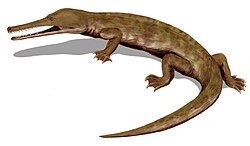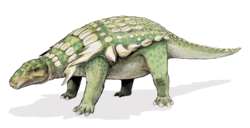| Judith River Formation | |
|---|---|
| Stratigraphic range: Campanian, | |
 Judith River Formation, Upper Missouri Breaks National Monument | |
| Type | Geological formation |
| Unit of | Montana Group |
| Sub-units | Parkman Sandstone Member, McClelland Ferry Member, Coal Ridge Member, Woodhawk Member |
| Underlies | Bearpaw Formation |
| Overlies | Claggett Formation, Pakowki Formation |
| Thickness | max 360 meters (1,180 ft) [1] |
| Lithology | |
| Primary | Mudstone and sandstone |
| Location | |
| Region | Alberta, Montana, South Dakota, Saskatchewan, Wyoming |
| Country | Canada, United States |
| Type section | |
| Named for | Judith River near the confluence with the Missouri River |
| Named by | F.V. Hayden, 1871; [2] F.B. Meek, 1876. [3] |
The Judith River Formation is a fossil-bearing geologic formation in Montana, and is part of the Montana Group. It dates to the Late Cretaceous, between 79 and 75.3 million years ago, [4] corresponding to the "Judithian" land vertebrate age. It was laid down during the same time period as portions of the Two Medicine Formation of Montana [5] and the Oldman Formation of Alberta. [6] It is an historically important formation, explored by early American paleontologists such as Edward Drinker Cope, who named several dinosaurs from scrappy remains found here on his 1876 expedition (such as Monoclonius ). Modern work has found nearly complete skeletons of the hadrosaurid Brachylophosaurus .





























